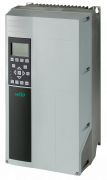Esošais Sūknis - Cirkulācija

Nomaiņas sūknis - Parastais Apmaiņats komplekts
Komentāri
Produkta informācija
IL 200/300-37/4

Your advantages
- Reduced life cycle costs thanks to optimized efficiency
- Standard condensate drainage holes in the motor housings
- Can be used flexibly in air-conditioning and cooling systems, with application benefits due to direct draining of condensate via optimised lantern design (patented)
- High standard of corrosion protection thanks to cataphoretic coating
- High worldwide availability of standard motors (according to Wilo specifications) and standard mechanical seals
Glanded pump in in-line design with flange connection.
Application
Pumping of heating water (acc. to VDI 2035), cold water and water/glycol mixtures without abrasive substances in heating, cold water and cooling systems.
Scope of delivery
- Pump
- Installation and operating instructions
- Permissible temperature range -20 °C to +140 °C
- Mains connection 3~400 V, 50 Hz (others on request)
- Protection class IP 55
- Nominal diameter DN 32 to DN 250
- Max. operating pressure 16 bar (25 bar on request)
- Pump housing and lantern: Standard: EN-GJL-250; optionally spheroidal cast iron EN-GJS-400-18-LT
- Impeller: Standard: EN-GJL-200; special version: Bronze CuSn 10
- Shaft: 1.4122
- Mechanical seal: AQEGG; other mechanical seals on request
Single-stage, low-pressure centrifugal pump in in-line design with:
- Mechanical seal
- Flange connection with pressure measuring connection R 1/8
- Lantern
- Coupling
- IEC standard motor

The sensor measures the differential pressure between the suction ports and discharge ports to the pipes, and converts this into an electrical signal 4-20 mA, which is used by the frequency converter to regulate the pressure of the pump. The value of the output current is proportional to the differential pressure.

The sensor measures the differential pressure between the suction ports and discharge ports to the pipes, and converts this into an electrical signal 4-20 mA, which is used by the frequency converter to regulate the pressure of the pump. The value of the output current is proportional to the differential pressure.

The sensor measures the differential pressure between the suction ports and discharge ports to the pipes, and converts this into an electrical signal 4-20 mA, which is used by the frequency converter to regulate the pressure of the pump. The value of the output current is proportional to the differential pressure.

The sensor measures the differential pressure between the suction ports and discharge ports to the pipes, and converts this into an electrical signal 4-20 mA, which is used by the frequency converter to regulate the pressure of the pump. The value of the output current is proportional to the differential pressure.

The sensor measures the differential pressure between the suction ports and discharge ports to the pipes, and converts this into an electrical signal 4-20 mA, which is used by the frequency converter to regulate the pressure of the pump. The value of the output current is proportional to the differential pressure.











